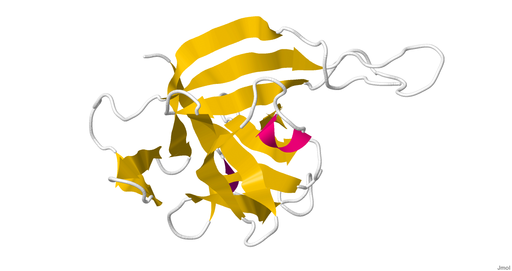Scientists Reveal Crucial Step in Allergic Reactions
| Marc Maligalig | | Oct 14, 2014 08:00 PM EDT |
(Photo : Wikimedia Commons)
A team of researchers from the Institut de Pharmacologie et de Biologie Structurale was able to demonstrate shortened forms of the interleukin-33 protein, an alarmin for white blood cells, that act as powerful activators of cells that cause allergic reactions.
The development in comprehending the underlying mechanisms of allergies could have significant applications in the treatment of asthma and other allergic illnesses such as allergic rhinitis and eczema.
Like Us on Facebook
Discovered by Jean-Philippe Girard, an INSERM senior researcher, in 2003, interleukin-33 is a protein in the family if interleukins, soluble messengers that allow communication between the immune system's cells and play a significant role in tissue inflammation. The protein, which is kept in the blood vessels, lungs, intestine or skin, is only launched in the event of cell damage. It performs as an alarmin that alerts the body of infection or trauma by prompting several cells in the immune system.
For several years, scientists have been attempting to comprehend how the activity of interleukin-33 is controlled. They have discovered that damaged cells release the protein, which is then truncated by the enzymes secreted by the white blood cells, called mastocytes, that play a crucial role in allergic reactions. The truncated forms have been demonstrated to be 30 times more potent than interleukin-33's original form by strengthening the danger signal to the body's immune system.
The team successfully confirmed that the highly potent signal is capable of alerting group 2 innate lymphoid cells, cells that are related to lymphocytes. The cells have a crucial part in allergy by triggering the chain reactions that cause the allergic symptoms of allergic rhinitis, asthma or eczema.
For the team of scientists, a promising strategy to treat asthma and other allergic diseases is to reduce the interleukin-33's effect on the immune system by averting the production of the truncated forms of ILC2.
TagsAllergy, Interleukin-33, White blood cells, asthma, Allergic rhinitis, Exzema, Mastocytes
©2015 Chinatopix All rights reserved. Do not reproduce without permission
EDITOR'S PICKS
-

Did the Trump administration just announce plans for a trade war with ‘hostile’ China and Russia?
-

US Senate passes Taiwan travel bill slammed by China
-

As Yan Sihong’s family grieves, here are other Chinese students who went missing abroad. Some have never been found
-

Beijing blasts Western critics who ‘smear China’ with the term sharp power
-

China Envoy Seeks to Defuse Tensions With U.S. as a Trade War Brews
-

Singapore's Deputy PM Provides Bitcoin Vote of Confidence Amid China's Blanket Bans
-

China warns investors over risks in overseas virtual currency trading
-

Chinese government most trustworthy: survey
-

Kashima Antlers On Course For Back-To-Back Titles
MOST POPULAR
LATEST NEWS
Zhou Yongkang: China's Former Security Chief Sentenced to Life in Prison

China's former Chief of the Ministry of Public Security, Zhou Yongkang, has been given a life sentence after he was found guilty of abusing his office, bribery and deliberately ... Full Article
TRENDING STORY

China Pork Prices Expected to Stabilize As The Supplies Recover

Elephone P9000 Smartphone is now on Sale on Amazon India

There's a Big Chance Cliffhangers Won't Still Be Resolved When Grey's Anatomy Season 13 Returns

Supreme Court Ruled on Samsung vs Apple Dispute for Patent Infringement

Microsoft Surface Pro 5 Rumors and Release Date: What is the Latest?










